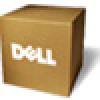Dell PowerConnect W-Airwave W-Airwave 7.3 User Guide - Page 108
Running a Scan Set
 |
View all Dell PowerConnect W-Airwave manuals
Add to My Manuals
Save this manual to your list of manuals |
Page 108 highlights
6. When ready, proceed to the next task, "Running a Scan Set" on page 108. NOTE: Scheduling an HTTP scan to run daily on your network can help you to discover rogues. Some consumer APs, like most DLink, Linksys, and NetGear models, do not support SNMP and are found only on the wired side with an HTTP scan. These devices are discovered only if they have a valid IP address. Proper credentials are not required to discover these APs. Wireless scans and the AMC discover these rogues without any special changes. Running a Scan Set Once a scan has been defined on the Device Setup > Discover page, AMP can now scan for devices. Perform these steps. 1. Browse to the Device Setup > Discover page and locate the list of all scan sets that have been defined so far. Figure 70 illustrates this page. Figure 70 Device Setup > Discover Executing a Scan Illustration 2. Check the box next to the scan(s) that you would like to execute. 3. Select Scan to execute the selected scans, and the scan immediately begins. The last column indicates the scan is In Progress. 4. For future scans, select Show Scheduling Options and enter the desired date and time. 5. After several minutes have passed, refresh the browser page and view the results of the scan. When the Start and Stop columns display date and time information, the scan is available to display the results. 6. Select the pencil icon for the scan to display the results. Table 69 describes the scan results and related information. Table 69 Device Setup > Discover > Discovery Execution Fields Column Description Network Credentials Total Devices Found New Devices Found Total Rogues Found New Rogues Found Start Stop Scheduled Displays the network to be scanned. Displays the credentials used in the scan. Displays the total number of APs detected during the scan that AMP can configure and monitor. Total includes both APs that are currently being managed by AMP as well as newly discovered APs that are not yet being managed. Displays the number of discovered APs that are not yet managed, but are available. Displays the total number of APs detected during the scan that AMP could not configure or monitor. Total includes both APs that have been discovered in earlier scans as well as newly discovered APs from the most recent scan. Displays the number of rogue APs discovered on the most recent scan. Displays the date and time the most recent scan was started. Displays the date and time the scan most recently completed. Displays the scheduled date and time for scans that are scheduled to be run. 108 | Discovering, Adding, and Managing Devices Dell PowerConnect W-AirWave | Version 7.3















